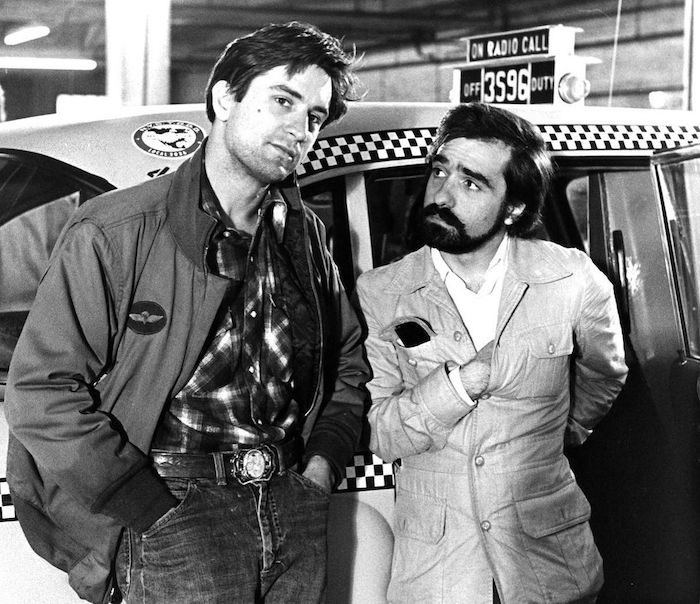The Producers Guild of America (PGA) and the Directors Guild of America (DGA) are two leading organizations in the entertainment industry. The PGA, established in 1962, represents producers in film, television, and new media. The DGA, founded in 1936, is a professional association for directors working in film, television, and commercials. While both organizations play essential roles in promoting and protecting the interests of their members, they function differently.

The PGA deals with all aspects of producing, including financing, development, and distribution of content. On the other hand, the DGA is primarily concerned with ensuring that a director’s creative vision is realized by maintaining artistic and technical standards, negotiating contracts, and protecting the rights of directors.
Membership requirements also differ between the two organizations. To become a PGA member, a producer must have a specific number of production credits or achieve a certain level of success in the industry. In contrast, DGA membership is only available to directors who have secured a directing position on a production.
Moreover, the PGA has a broader membership base than the DGA, as it represents producers of all levels, including assistants, coordinators, and other industry professionals. In contrast, the DGA only represents directors.
In fact, while both organizations are critical to the entertainment industry, the PGA and the DGA have different roles and membership requirements. Understanding the differences between these organizations can help industry professionals determine which one is best for their career goals and aspirations.
Read: What Does p.g.a. Mean in Film Credits?
Producers Guild of America
The Producers Guild of America (PGA) is a professional organization representing television, film, and new media producers in the United States. Founded in 1950, it is one of the most prestigious organizations for these professionals.
History and Background of the Organization
- The PGA was first known as the Screen Producers Guild and was established to help protect producers’ rights during the rise of television.
- In 1962, the organization was renamed the Producers Guild of America.
- The PGA continues to evolve and expand, with the latest addition being New Media in 2006.
Membership Requirements and Benefits
- To become a member of the PGA, producers must have produced at least one feature film, television show, or digital media project that has been distributed or produced by a recognizable entity in the industry.
- The benefits of membership include access to exclusive events, professional development programs, and networking opportunities among peers and industry leaders.
- Members are also eligible for recognition through a variety of PGA awards, including the prestigious Producers Guild Award.
Role of the PGA in the Entertainment Industry
- The PGA serves as a collective voice for producers in the industry and advocates for their interests in business, legal, and creative matters.
- It also provides guidance and standards for the profession, promoting consistent and ethical practices among members.
- The PGA plays a crucial role in the production process, from development through distribution, by facilitating collaboration between producers, studios, and networks.
Examples of Notable PGA-Produced Projects
- The PGA has produced many successful and critically acclaimed films, including The Shape of Water, La La Land, and The Revenant.
- On the television side, some of the biggest hits of recent years have been produced by PGA members, such as Game of Thrones, Breaking Bad, and Stranger Things.
- New media projects, including the popular web series High Maintenance, have also been recognized and supported by the PGA.
The Producers Guild of America is an invaluable resource for producers in the entertainment industry, providing support, guidance, and recognition for their hard work and dedication. Its history, membership requirements, and notable productions all serve as a testament to the organization’s importance and influence in the industry.
Read: The Art of Film Production: Lessons from PGA Veterans

Directors Guild
History and background of the organization
The Directors Guild of America (DGA) is a union for film and television directors, founded in 1936 as the Screen Directors Guild. The organization changed its name to Directors Guild of America in 1960.
Today, the DGA represents over 18,000 members, including film and television directors, assistant directors, and stage managers.
Membership requirements and benefits
Membership requires directing a certain number of feature films, television shows, or commercials, as well as meeting other qualifications set forth by the organization. This comes with a variety of benefits, including protection of intellectual property rights, negotiation of contracts, and access to industry resources. Members also have access to a variety of professional development resources, including workshops, mentoring programs, and networking opportunities.
Role of the DGA in the entertainment industry
In addition to protecting the rights of its members, the DGA plays a critical role in promoting professional standards and creative rights in the entertainment industry. The organization advocates for fair labor practices, including diverse hiring and fair wages for its members.
The DGA also works to promote the interests of its members by lobbying lawmakers on issues related to intellectual property rights, copyright law, and other issues that impact directors and the entertainment industry as a whole.
Examples of notable DGA-directed projects
Notable projects directed by DGA members include Steven Spielberg’s “Schindler’s List,” Kathryn Bigelow’s “The Hurt Locker,” and Martin Scorsese’s “The Departed.” Other notable directors who are members of the DGA include Ron Howard, Spike Lee, and Christopher Nolan.
Innovative Tech Solutions, Tailored for You
Our leading tech firm crafts custom software, web & mobile apps, designed with your unique needs in mind. Elevate your business with cutting-edge solutions no one else can offer.
Start NowOverall, the DGA plays a vital role in ensuring that the voices of directors are heard in the entertainment industry and that their creative and professional interests are protected. For aspiring directors, membership in the DGA can open up new professional opportunities and provide access to valuable resources that can help them achieve success in their careers.
Differences Between the PGA and DGA
The Producers Guild of America (PGA) and the Directors Guild of America (DGA) are both influential organizations within the entertainment industry. However, they have distinct primary focuses and responsibilities. In this chapter, we will explore these differences, ways the PGA and DGA collaborate, and examples of conflicts between the two organizations.
1. Primary Focuses and Responsibilities of Each Organization
A. Producers Guild of America (PGA)
- Represents producers in film, television, and new media
- Advocates for producers’ rights and interests
- Sets standards for producer credits
- Provides resources, education, and networking opportunities for members
B. Directors Guild of America (DGA)
- Represents directors and their teams, including assistant directors, unit production managers, and stage managers
- Protects the creative rights of directors
- Ensures fair wages and working conditions for members
- Offers training and mentorship programs
While both organizations play significant roles within the entertainment industry, their primary focuses differ. The PGA concentrates on advocating for and supporting producers, while the DGA focuses on directors and their teams.
Read: Top 10 Producers in the Producers Guild of America
2. Ways in Which the Producers PGA and DGA Collaborate and Work Together
Despite their distinct roles, the PGA and DGA often collaborate and work together to support the industry. Some ways they work together include:
A. Joint agreements and negotiations: Both organizations participate in collective bargaining negotiations with studios and networks to secure better working conditions, wages, and benefits for their members.
B. Co-hosting events and panels: The PGA and DGA often co-host events and panels, allowing members to network, discuss industry issues, and share best practices.
C. Joint advocacy efforts: The organizations join forces to advocate for legislation that benefits the entire entertainment industry, such as tax incentives for film production.
By collaborating on these initiatives, the PGA and DGA strengthen their collective influence within the industry.
3. Examples of Conflicts Between the Two Organizations
While the PGA and DGA frequently collaborate, conflicts can arise due to differing priorities and interests. Here are a few examples of conflicts between the two organizations:
A. Disputes over credits: One common conflict involves disputes over film credits, particularly the “Produced by” credit. The DGA may argue that a director’s creative contribution deserves more recognition, while the PGA might assert that a producer’s role is equally important.
B. Creative differences: Disagreements can also occur when a director and producer have conflicting creative visions for a project. This can lead to tension and, in some cases, legal disputes.
C. Labor disputes: Although both organizations work together in collective bargaining negotiations, they may have different priorities or stances on specific labor issues, leading to disagreements during negotiations.
While conflicts between the PGA and DGA are not uncommon, it is essential to recognize that both organizations share a commitment to the success and well-being of their members and the entertainment industry as a whole.
Basically, the Producers Guild of America (PGA) and the Directors Guild of America (DGA) are distinct organizations with different primary focuses and responsibilities. The PGA advocates for producers, while the DGA represents directors and their teams. Despite these differences, the organizations often collaborate to strengthen the industry. However, conflicts can arise, such as disputes over credits, creative differences, or labor issues. By understanding the roles and relationships between these organizations, we can better appreciate their contributions to the entertainment industry.
Read: Breaking into Hollywood: Insights from PGA Members

The Guilds and Creative Control
When it comes to producing films and television shows, the relationship between producers and directors can be a delicate one. This relationship is further complicated by the involvement of guilds such as the PGA (Producers Guild of America) and DGA (Directors Guild of America), which have a significant impact on creative control over projects. Let’s take a closer look at how these guilds impact creative control and some examples of successful navigation of this relationship.
Impact of PGA and DGA
Both the PGA and DGA have contracts in place that outline the responsibilities of producers and directors, including areas of creative control. Generally, the DGA agreement grants directors more control over the creative aspects of a project, including the final cut. Producers are responsible for the business aspects of the project but can exert some creative control, subject to the director’s approval.
The PGA agreement grants producers more control over the creative aspects, including the final cut, while directors are still responsible for the artistic aspects. However, unlike the DGA agreement, the PGA agreement requires producers to consult with directors before making any changes to the artistic content.
Successful Navigation of the Relationship
Despite the potential for conflict, many producers and directors have managed to navigate this relationship successfully. One example is the partnership between producer Brian Grazer and director Ron Howard. Together, they have produced several successful films and television shows, including A Beautiful Mind, Arrested Development, and Apollo 13. Howard has praised Grazer’s ability to balance the financial and creative aspects of production, allowing him to focus on bringing his vision to life on screen.
Another example is the collaboration between producer Kathleen Kennedy and director Steven Spielberg. Together, they have produced numerous films, including E.T. the Extra-Terrestrial, Jurassic Park, and Schindler’s List. Kennedy has credited Spielberg with giving her the artistic freedom to develop projects and make creative decisions. In turn, Spielberg has praised Kennedy’s ability to balance the creative and business aspects of production.
Conflicts between Producers and Directors
Despite successful collaborations, conflicts between producers and directors are not uncommon. In 2017, the producers of Justice League replaced director Zack Snyder with Joss Whedon following Snyder’s family tragedy. The move was controversial and resulted in a fan-led campaign to release Snyder’s original version of the film. Snyder himself has criticized the producers for changing his vision and has now released his own cut, the Snyder Cut.
Another example is the troubled production of Fantastic Four (2015). Director Josh Trank clashed with the film’s producers, especially over the final cut of the film. Trank accused the producers of interfering with his artistic vision, resulting in a compromised final product that was panned by fans and critics alike.
In short, the involvement of guilds such as the PGA and DGA can impact the relationship between producers and directors when it comes to creative control over projects. However, successful collaborations between producers and directors are possible, as seen in the examples of Brian Grazer and Ron Howard, as well as Kathleen Kennedy and Steven Spielberg. Nevertheless, conflicts between producers and directors can still arise, as seen in the cases of Justice League and Fantastic Four. Ultimately, a balance between creative and business aspects is necessary for a successful production.
Seamless API Connectivity for Next-Level Integration
Unlock limitless possibilities by connecting your systems with a custom API built to perform flawlessly. Stand apart with our solutions that others simply can’t offer.
Get StartedRead: Career Path: How to Become a PGA Member Producer
Challenges Facing the Guilds
In the entertainment industry, guilds play an important role in representing and protecting the interests of their members. Two of the most prominent guilds in the industry are the Producers Guild of America (PGA) and the Directors Guild of America (DGA). However, both guilds face significant challenges that threaten their ability to function effectively.
Current challenges facing the PGA and DGA
- Lack of diversity: Both guilds have been criticized for their lack of diversity, particularly in terms of race and gender. Members of underrepresented groups often struggle to get hired for key positions in the industry, which limits their chances of becoming members of the guilds.
- Streaming platforms: The rise of streaming platforms like Netflix and Amazon has disrupted the traditional distribution model for films and television shows. This has resulted in lower budgets for some productions, which can make it harder for producers and directors to meet the guilds’ requirements for membership.
- Changing industry standards: The entertainment industry is constantly evolving, and new technologies and trends can make it hard for guilds to keep up. For example, the rise of virtual reality and other immersive experiences has created new opportunities for content creators, but it’s not yet clear how these types of projects will fit into the existing guild structures.
How changes in the industry are impacting the function of these organizations
The challenges facing the PGA and DGA are not just theoretical; they are having real-world impacts on the way the guilds operate. For example:
- In response to complaints about lack of diversity, both guilds have implemented new initiatives aimed at promoting greater inclusion.
- The rise of streaming platforms has led the PGA to establish new eligibility requirements for its Producers Mark, which is used to indicate that a film or television show meets certain standards of quality and professionalism.
- The changing nature of the industry has led both guilds to rethink their role in protecting the rights of their members. For example, some experts have suggested that guilds should take a more active role in advocating for fair compensation in the streaming era.
Possible future directions for the guilds
To overcome the challenges they face, the PGA and DGA may need to make some fundamental changes in the way they operate. Here are some possible directions they could take:
- Embrace new technologies: Rather than trying to resist change, the guilds could take a more proactive approach and work to incorporate new technologies like virtual reality into their membership requirements and training programs.
- Expand eligibility criteria: To increase diversity and help members adapt to changes in the industry, the guilds could consider expanding their eligibility criteria to include more types of content creators, such as independent filmmakers and social media influencers.
- Take a more active advocacy role: Rather than just focusing on contract negotiations and other legal matters, the guilds could also take a more active role in advocating for the rights and interests of their members in the broader entertainment industry.
Overall, the challenges facing the PGA and DGA are significant, but they are not insurmountable. By embracing change, adopting new strategies, and working together, these guilds can continue to play an important role in the entertainment industry for years to come.
Read: How to Write a Movie Script
Conclusion
The differences between the PGA and DGA are significant. The PGA focuses on the business side, while the DGA is concerned with the creative. However, both organizations play crucial roles in the entertainment industry, and their strengths complement each other.
Producers and directors must work together to create successful projects. The PGA and DGA provide the structure and support necessary for this collaboration. It is clear that the relationship between producers and directors is vital to the success of any film or television show.
While their roles may differ, both parties must work together. A good producer knows how to support and collaborate with the director, while the director brings the creative vision. In the end, it is the combination of these different strengths that produces great art.
Before You Go…
Hey, thank you for reading this blog to the end. I hope it was helpful. Let me tell you a little bit about Nicholas Idoko Technologies. We help businesses and companies build an online presence by developing web, mobile, desktop, and blockchain applications.
We also help aspiring software developers and programmers learn the skills they need to have a successful career. Take your first step to becoming a programming boss by joining our Learn To Code academy today!
Be sure to contact us if you need more information or have any questions! We are readily available.











